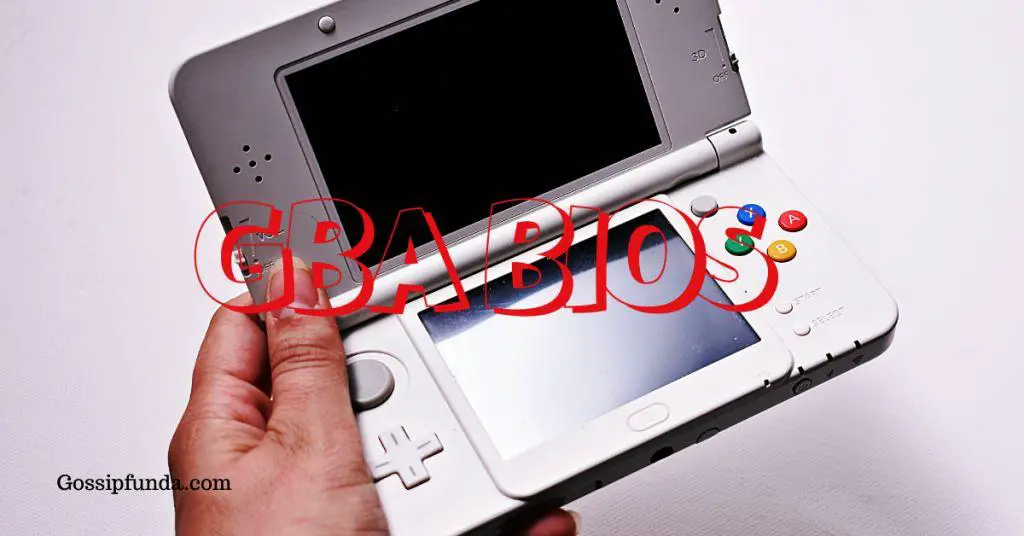A Gamer’s Worst Nightmare, Picture this: you’ve been eagerly anticipating a gaming session with your friends, but as soon as you try to launch the Riot Client, it refuses to open. This can be both frustrating and disheartening. Don’t worry, though! In this comprehensive guide, we’ll explore the reasons behind the Riot Client not opening, and provide you with step-by-step solutions to get back in the game. Let’s dive in!
Common Reasons Behind the Riot Client Not Opening
A. Outdated Software
An outdated version of the Riot Client can cause it to malfunction. Regular updates ensure compatibility with the latest features and bug fixes, making it crucial to keep your client up-to-date.
B. Corrupted Installation
A corrupted installation can result from an interrupted download or issues during the installation process, leading to the client failing to launch.
C. Firewall or Antivirus Interference
Sometimes, firewalls or antivirus software may mistake the Riot Client as a potential threat, blocking its execution and causing it not to open.
D. Incompatible Graphics Drivers
Outdated or incompatible graphics drivers can cause performance issues, including preventing the Riot Client from opening.
How to fix Riot Client Not Opening Issue?
Fix 1: Update the Riot Client
A. Manual Update
To update your Riot Client manually, follow these steps:
- Close the Riot Client and any related processes using Task Manager.
- Navigate to the Riot Games folder on your computer.
- Delete the “Riot Client” folder.
- Restart your computer.
- Launch the game client, which should prompt an automatic update.
B. Automatic Update
Updating the Riot Client can resolve issues related to it not opening. Here’s a detailed step-by-step procedure to update the Riot Client:
- Close the Riot Client and related processes:
- Press Ctrl+Shift+Esc to open the Task Manager.
- Look for any Riot Client or League of Legends processes.
- Click on each process and select “End task” or “End process.”
- Locate and delete the “Riot Client” folder:
- Navigate to the Riot Games installation folder on your computer. The default path is usually “C:\Riot Games”.
- Find the “Riot Client” folder within the Riot Games folder.
- Right-click on the “Riot Client” folder and click “Delete” or simply press the “Delete” key on your keyboard.
- Restart your computer:
- Save any open work and close other applications.
- Click on the “Start” button, then click on the power icon, and select “Restart.”
- Launch the game client:
- After your computer has restarted, locate the League of Legends or VALORANT shortcut on your desktop or in the Start menu.
- Double-click the game shortcut to launch the client.
- Allow the automatic update:
- The client should now detect that the “Riot Client” folder is missing and initiate an automatic update.
- Wait for the update to download and install. This may take some time, depending on your internet connection.
- Verify the update:
- Once the update is complete, the client should open normally.
- Check the bottom right corner of the client window for the version number to ensure it is up-to-date.
By following these steps, you should successfully update your Riot Client, which can resolve the issue of it not opening. If the problem persists, consider trying other troubleshooting methods, such as reinstalling the client or updating your graphics drivers.
Fix 2: Uninstall then Reinstall the Riot Client
Uninstalling and then reinstalling the Riot Client can resolve issues related to it not opening. Here’s a detailed step-by-step procedure to uninstall and reinstall the Riot Client:
- Close the Riot Client and related processes:
- Press Ctrl+Shift+Esc to open the Task Manager.
- Look for any Riot Client or League of Legends processes.
- Click on each process and select “End task” or “End process.”
- Uninstall the Riot Client:
- Click on the “Start” button and select “Settings” (gear icon).
- Click on “Apps” to open the list of installed programs.
- Scroll through the list and find “Riot Client” or “League of Legends.”
- Click on the program, then click “Uninstall” and follow the prompts to remove it from your system.
- Restart your computer:
- Save any open work and close other applications.
- Click on the “Start” button, then click on the power icon, and select “Restart.”
- Download the latest version of the Riot Client:
- Visit the official Riot Games website (for League of Legends or VALORANT, depending on the game you play).
- Click on the “Download” or “Play Now” button to download the latest version of the game installer.
- Install the Riot Client:
- Locate the downloaded installer file, usually in your “Downloads” folder.
- Double-click the installer to start the installation process.
- Follow the on-screen prompts to choose the installation directory and complete the installation.
- Restart your computer (optional, but recommended):
- Save any open work and close other applications.
- Click on the “Start” button, then click on the power icon, and select “Restart.”
- Launch the game client:
- After your computer has restarted, locate the League of Legends or VALORANT shortcut on your desktop or in the Start menu.
- Double-click the game shortcut to launch the client.
- Allow the client to update (if necessary):
- The client may require additional updates. If prompted, allow the client to download and install the updates.
- Verify the installation:
- Once the installation and updates are complete, the client should open normally.
- Log in to your account and ensure you can access the game’s features without any issues.
By following these steps, you should successfully uninstall and reinstall the Riot Client, which can resolve the issue of it not opening. If the problem persists, consider trying other troubleshooting methods, such as updating your graphics drivers or configuring your firewall and antivirus settings.
Repair the Corrupted Installation
Use the Riot Client’s Built-in Repair Tool to repair which can help fix corrupted installations:
- Open the Riot Client’s settings menu.
- Click on “Initiate Full Repair” and wait for the process to complete.
- Restart the client.
Fix 3: Configure Firewall and Antivirus Settings
To prevent your firewall from blocking the Riot Client:
- Open your firewall settings.
- Add the Riot Client to the list of exceptions or allowed programs.
- Save the changes and restart the client.
Configure Antivirus Software
To prevent your antivirus software from interfering with the Riot Client:
- Open your antivirus settings.
- Add the Riot Client to the list of exceptions or trusted programs.
- Save the changes and restart the client.
Fix 4: Update Graphics Drivers
To ensure compatibility and optimal performance, update your graphics drivers:
- Visit your graphics card manufacturer’s website to download the latest drivers.
- Install the updated drivers and restart your computer.
Fix 5: Run the Riot Client as an Administrator
Running the Riot Client as an administrator can help resolve issues related to it not opening. Here’s a detailed step-by-step procedure to run the Riot Client as an administrator:
- Close the Riot Client and related processes:
- Press Ctrl+Shift+Esc to open the Task Manager.
- Look for any Riot Client or League of Legends processes.
- Click on each process and select “End task” or “End process.”
- Locate the game client shortcut:
Find the League of Legends or VALORANT shortcut on your desktop or in the Start menu, depending on the game you play.
- Run the Riot Client as an administrator:
- Right-click on the game client shortcut.
- In the context menu that appears, click on “Run as administrator.”
- Allow the User Account Control prompt (if applicable):
If you see a User Account Control (UAC) prompt asking for permission to allow the program to make changes to your computer, click “Yes” to proceed.
- Verify the client launch:
The Riot Client should now launch with administrator privileges, which can help resolve issues preventing it from opening.
- Set the client to always run as an administrator (optional):
If running the Riot Client as an administrator resolves the issue, you can set it to always run with administrator privileges. To do this, follow these steps:
- a. Right-click on the game client shortcut and click “Properties.”
- b. In the Properties window, click on the “Compatibility” tab.
- c. Check the box next to “Run this program as an administrator.”
- d. Click “Apply,” then click “OK” to save the changes.
By following these steps, you should be able to run the Riot Client as an administrator and potentially resolve the issue of it not opening. If the problem persists, consider trying other troubleshooting methods, such as updating the client, reinstalling it, or updating your graphics drivers.
Fix 6: Disable Unnecessary Background Applications
Closing non-essential programs can free up system resources and help the Riot Client run smoothly:
- Press Ctrl+Shift+Esc to open the Task Manager.
- End any unnecessary processes.
Fix 7: Check for Server Issues
Sometimes, the problem may not be on your end. Check Riot’s social media channels or the server status page for any known issues.
Conclusion
In conclusion, encountering a “Riot Client not opening” issue can be a hassle, but with our expert guidance, you can swiftly overcome this obstacle. By addressing outdated software, corrupted installations, firewall/antivirus interference, and graphics driver compatibility, you’ll be back to enjoying your favourite games in no time. Stay vigilant, keep your software up-to-date, and never miss a moment of gaming excitement.
FAQ
Q: Why won’t my Riot Client open?
A: Common reasons include outdated software, corrupted installations, firewall/antivirus interference, and incompatible graphics drivers.
Q: How can I update the Riot Client?
A: Either perform a manual update by deleting the “Riot Client” folder or reinstall the client from the official website.
Q: What should I do if my installation is corrupted?
A: Try using the built-in repair tool or reinstall the Riot Client to fix the issue.
Q: How can I prevent firewall or antivirus interference?
A: Add the Riot Client to your firewall exceptions and antivirus trusted programs list.
Q: How do I update my graphics drivers?
A: Visit your graphics card manufacturer’s website, download the latest drivers, and install them.
Q: Should I run the Riot Client as an administrator?
A: Yes, running the client as an administrator can help resolve some issues.
Q: Can background applications affect the Riot Client?
A: Unnecessary background applications can consume system resources, so close them to ensure smooth performance.
Q: How can I check if there are server issues?
A: Monitor Riot’s social media channels or visit the server status page for any known issues.
Prachi Mishra is a talented Digital Marketer and Technical Content Writer with a passion for creating impactful content and optimizing it for online platforms. With a strong background in marketing and a deep understanding of SEO and digital marketing strategies, Prachi has helped several businesses increase their online visibility and drive more traffic to their websites.
As a technical content writer, Prachi has extensive experience in creating engaging and informative content for a range of industries, including technology, finance, healthcare, and more. Her ability to simplify complex concepts and present them in a clear and concise manner has made her a valuable asset to her clients.
Prachi is a self-motivated and goal-oriented professional who is committed to delivering high-quality work that exceeds her clients’ expectations. She has a keen eye for detail and is always willing to go the extra mile to ensure that her work is accurate, informative, and engaging.


